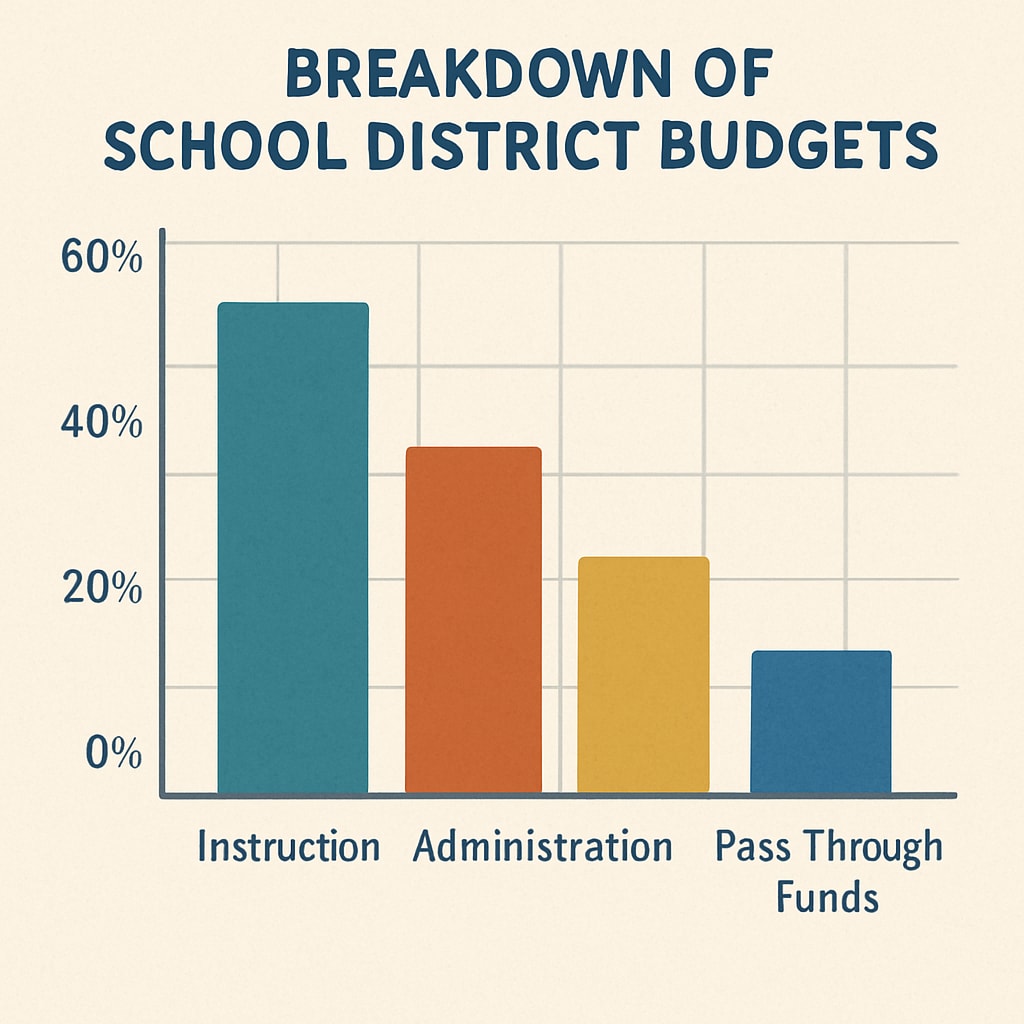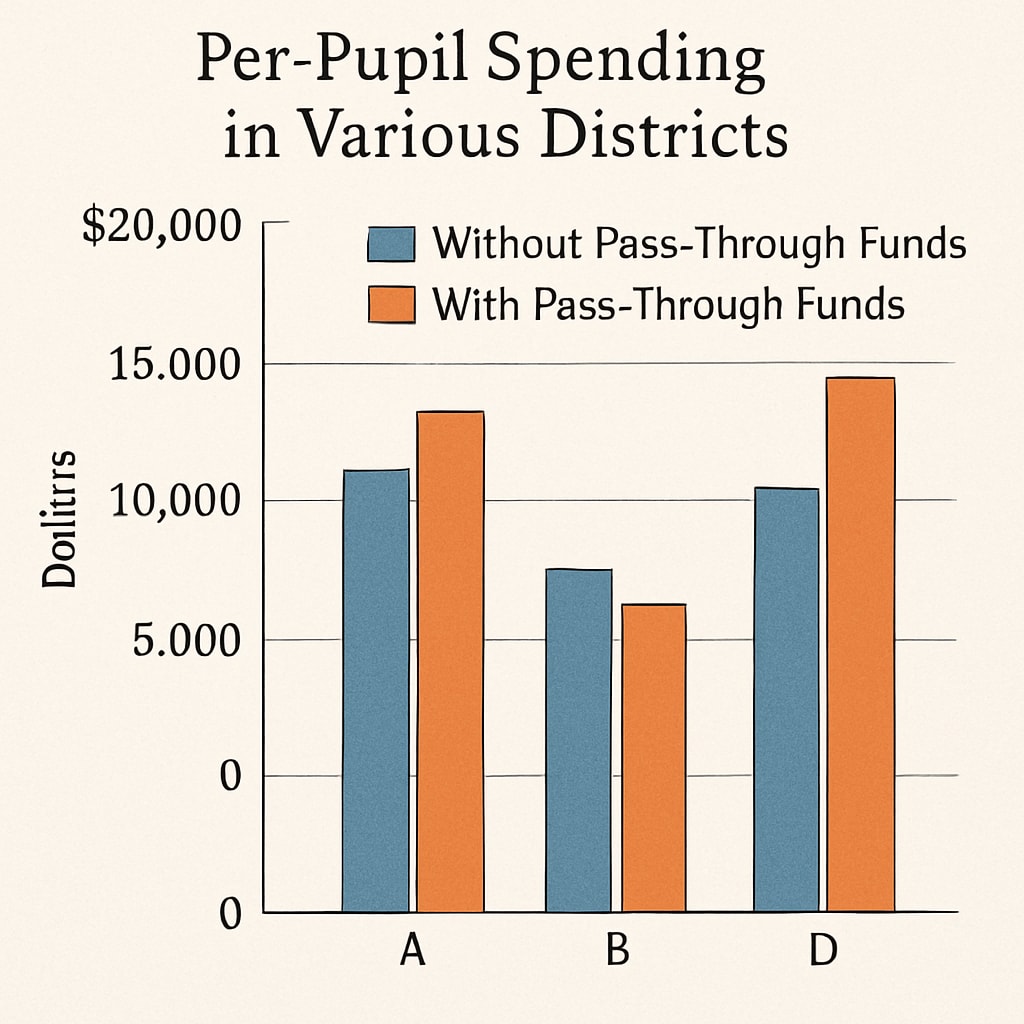In the realm of K12 education, the allocation of financial resources is a topic of constant scrutiny and debate. One area where this discussion often becomes complex is the calculation of per-pupil spending. While this metric is widely used to assess educational investments, the inclusion of pass-through funds can distort these statistics, potentially leading to misrepresentations in school budgets. This article aims to unpack the impact of pass-through funds on per-pupil spending and highlight the need for greater transparency in educational finance reporting.
What Are Pass-Through Funds and How Do They Work?
Pass-through funds refer to financial resources that are allocated to a school district or institution but are not retained for direct use. Instead, these funds are “passed through” to other entities, such as charter schools, private institutions, or specific programs. For example, a school district might receive funds earmarked for special education services, which are then redirected to external providers who manage these services.
While these funds are technically counted as part of the district’s budget, they do not directly benefit the students enrolled in public schools within that district. This creates a discrepancy between the reported per-pupil spending and the actual resources available for students in traditional public schools.

How Pass-Through Funds Distort Per-Pupil Spending Statistics
One major issue with pass-through funds is their ability to artificially inflate per-pupil spending figures. Since these funds are included in the total budget calculation, they give the impression of higher investment in education than what is actually accessible to public schools. For example:
- A district with significant pass-through funds might report $15,000 per student in spending, but only $10,000 of that amount is directly allocated to the schools under its jurisdiction.
- Specialized programs or services funded through pass-through mechanisms may disproportionately benefit smaller subsets of students, leaving others underserved.
This misrepresentation can lead to misguided policy decisions, as funding levels appear adequate on paper while schools struggle to meet basic operational needs. Moreover, taxpayers and stakeholders may be misled into believing that public education is better funded than it truly is.
Impact on Resource Distribution and Equity
The distortion caused by pass-through funds has broader implications for resource distribution and equity across schools. In districts with a high reliance on pass-through mechanisms, traditional public schools may face funding shortfalls, particularly in low-income areas where additional resources are needed the most.
For example, a 2022 study by Britannica revealed that schools serving underprivileged communities often receive less per-pupil funding when pass-through allocations are excluded from the equation. This discrepancy exacerbates existing inequalities and undermines efforts to provide all students with equal opportunities to succeed. Transparency in reporting and a clear distinction between pass-through and direct-use funds are essential to address these challenges.

Moving Toward Greater Transparency in School Budgets
To ensure that educational resources are distributed fairly and effectively, policymakers and administrators must adopt more transparent financial reporting practices. This includes:
- Clearly distinguishing between pass-through funds and direct-use allocations in budget reports.
- Providing detailed breakdowns of how pass-through funds are utilized and their impact on the broader educational ecosystem.
- Engaging with stakeholders to educate them about the nuances of school funding and the limitations of per-pupil spending metrics.
Adopting these practices not only improves accountability but also helps build trust among parents, educators, and taxpayers. By presenting a more accurate picture of school budgets, districts can better advocate for the resources they genuinely need.
As a result, the focus can shift from superficial metrics to meaningful investments that directly enhance the quality of education for all students.
Conclusion: Rethinking Per-Pupil Spending Metrics
Pass-through funds play a significant role in the financial landscape of K12 education, but their inclusion in per-pupil spending calculations can lead to misleading conclusions about the state of school funding. To address this issue, education leaders must prioritize transparency and accuracy in financial reporting. By doing so, they can ensure that resources are allocated fairly and effectively, ultimately supporting the success of every student.
As stakeholders in education, we must remain vigilant in scrutinizing how financial data is presented and advocate for reforms that promote equity and accountability. Only then can we create a funding system that truly reflects the needs of our schools and students.


